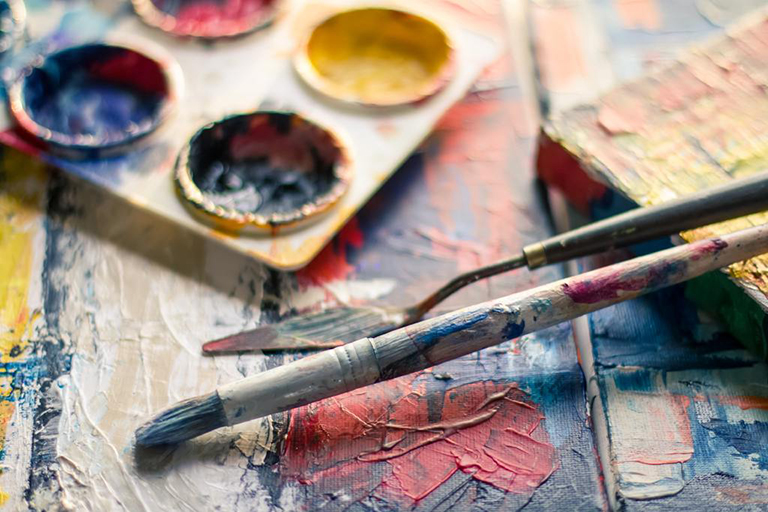- Instructor
- Nicolas Valazza
- Location
- HU 108
- Days and Times
- TR 3:00P - 4:15P
- Course Description
The purpose of this course is to explore the relationship between painting and literature from an interdisciplinary perspective (literary, art historical, and philosophical), while developing a critical approach that questions the connections and discrepancies between text and image throughout history. Literature and painting have often been considered “sister arts,” even though their relationship has been characterized by rivalry as much as solidarity. Since Plato and the exclusion of “artists” from his Republic, painters and writers have struggled to assert their respective arts among the liberal ones. But while poetry was integrated earlier into humanist education, thanks to its discursive and “intellectual” nature, painting had to wait until the Italian Renaissance to get rid of its connotation as a mere mechanical art, and thus acquire its liberal status. Furthermore, only by comparing itself to the “intellectual” dignity of poetry, did painting succeed in surpassing its former status. Since the Renaissance, painters and poets have, on the one hand, fraternized with each other to promote the complementarity of both arts while, on the other hand, struggling to assert the superiority of their own art.
In this course, we will read and analyze several key texts that retrace the ambivalent relationship between painting and literature from antiquity to modern times. Beginning with the section of Plato’s Republic condemning the arts of imitation, as well as the section of Aristotle’s Poetics that conversely praises them, we will then examine Pliny’s and Ovid’s legendary tales about painters, which define many characteristics of the figure of the artist as they are still conceived nowadays. We will next devote our class meetings to the emergence of art theory in the Italian Renaissance, by reading excerpts from writings by artists (Alberti, Leonardo da Vinci, Vasari) who claimed the intellectual status of painting (what Leonardo calls “cosamentale”: “a thing of the mind”). It will be interesting to see how this “liberalization” of painting was achieved by way of comparing it to poetry and other liberal arts, including geometry and astronomy. In order to become familiar with critical concepts of modern aesthetics (such as the “sublime” and the “relativity of beauty”), we will then read selected texts by 18th-century philosophers, artists and art critics (Kant, Burke, Hume, Diderot, Richardson, Hogarth, Reynolds, etc.). Lastly, we will explore the figure of the painter as a fictional character, as he appears in several short stories and novels: Balzac’s The Unknown Masterpiece, Gautier’s The Golden Fleece, Huysmans’ Against the Grain and Wilde’s The Picture of Dorian Gray; as well as in film adaptations of these narratives. When possible, as a base for the critical reflection on the comparison between text and image, readings will be supported by visual examples taken from painters mentioned or implied in the literature.
The Pen and the Paintbrush



 The College of Arts
The College of Arts